
Gm7 (G Minor Seventh)
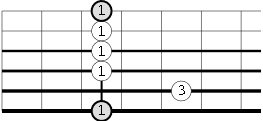
or
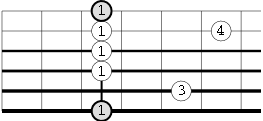
Gm6 (G Minor Sixth)
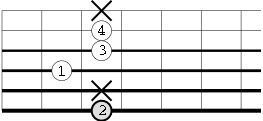 or
or 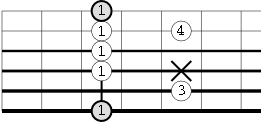
Gm7-9 (G Minor Seventh-Ninth)
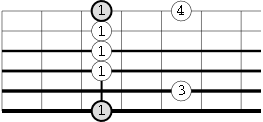
Discussion of the patterns
The minor chord variations work very
much like the major chord variations, in that additional notes are
added to the fundamental three of the minor chord to form the
variations - either the seventh note, the sixth, or the ninth. For the
minor chord, the minor scale is used, so the seventh note is that from
the minor scale, which is 2 frets down from the root note. (This is the
same as the flatted seventh used in the major chord variation.)
Second form
The second form chords are shown at the third fret, making these C
chords.
Cm (C Minor)

Cm7 (C Minor Seventh)

or
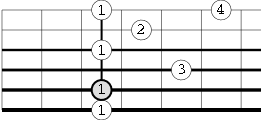
Cm6 (C Minor Sixth)
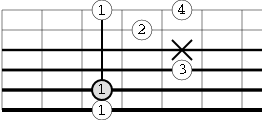
Cm9 (C Minor Ninth)
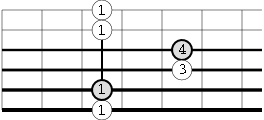
Cm7-9 (C Minor Seventh-Ninth)
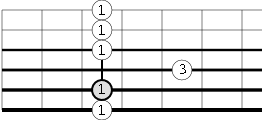
Discussion of the patterns
Again, we're just adding notes to the fundamental three.
One thing to note is in the minor ninth chords - these are identical to
the major ninth chords! This is because the ninth note (which as
discussed before is the second note) is added by moving the third note
of the scale (on the second string) down one fret. Thus the third note
is replaced by the second (ninth) note. But in the second form, the
third note on the second string is the only third note in the chord.
When it's replaced by the ninth note, there's no third note left. Since
it's the third note that differentiates the major and minor chords, the
major and minor ninth chords become the same. This leads to ambiguity
in the ninth chord - it sounds neither major nor minor, which gives it
an interesting feel.
Third form
The third form minor chords aren't as useful as the other two forms, so they're not shown here.
Comments/questions: jsevy@cs.drexel.edu




 or
or 
 or
or 


 or
or 


